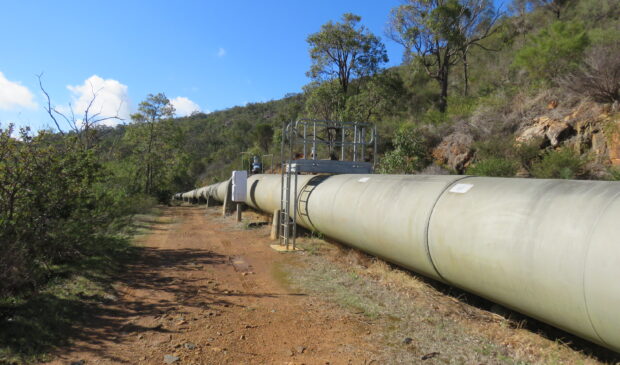About the Author
Chad Swiatecki is a 20-year journalist who relocated to Austin from his home state of Michigan in 2008. He most enjoys covering the intersection of arts, business and local/state politics. He has written for Rolling Stone, Spin, New York Daily News, Texas Monthly, Austin American-Statesman and many other regional and national outlets.
Newsletter Signup
The Austin Monitor thanks its sponsors. Become one.
Most Popular Stories
- Austin-Bergstrom International Airport announces new flight service while anticipating capacity cuts
- City facing a $33 million deficit for 2026
- Austin ISD gets $41 million from the Education Department. What happens if the agency closes?
- SOS suing state agency over failure to provide information on MoPac expansion
- Staffing isn’t the only thing to blame for Austin’s slow 911 response times
-
Discover News By District

Panelists talk pipelines, batteries and other answers to Austin’s energy demands
Monday, April 14, 2025 by Chad Swiatecki
Austin’s fast-paced growth and the increasing energy demands of large industries like data centers and advanced manufacturing are pushing the region’s energy infrastructure toward a critical juncture, according to experts who spoke at the Austin Chamber of Commerce’s recent Infrastructure Summit.
Energy leaders from major regional suppliers, utilities and infrastructure companies participated in a panel discussion that detailed the urgency and complexity of planning for future reliability in the Austin area. Panelists highlighted that the existing energy systems are straining under a surge in demand that continues to outpace current capacity expansions.
The rising fuel demand to meet the growth of Austin-Bergstrom International Airport was also identified as a pressure point, with the facility currently requiring over 100 tanker truck deliveries of jet fuel daily. Industry representatives described this as an unsustainable “just-in-time” system that will require substantial investment in pipeline projects to meet future needs.
“You can imagine as this airport grows, as demand in this region grows, the infrastructure needs to grow with it,” said Jake Reint, vice president of public affairs for Flint Hills Resources, which supplies airline fuel to the Austin and Dallas markets. “Additional investment is gonna be needed for this region even as people transition to electrics and and other alternatives. Demand for liquid transportation fuels in a state like Texas isn’t going away anytime soon.”
The panel emphasized the seriousness of ERCOT estimates indicating a potential tripling of supply grid demand within five years, with that level of output physically unattainable due to supply chain constraints for steel and other basic components.
In Central Texas, major natural gas pipeline expansions completed recently have provided new supply routes, with further projects underway. Panelists stressed that during winter storms, such as 2021’s Winter Storm Uri, these lines functioned as critical lifelines, but concerns remain about the resilience of the natural gas system under extreme weather conditions and the coordination between gas supply and power generation sectors.
Decentralized systems, such as on-site solar and combined heat and power installations, are seen as a way to help alleviate grid pressures. Companies with significant energy needs are already investing in on-site generation, with local refineries developing solar projects capable of supplying substantial portions of their power needs.
Data centers “are big, big users of power and some of them now are bringing their power with them before they come. … They’re bringing power contracts, but they’re the amount of load that’s coming to this area is something that we’re struggling with every day,” said Tom Oney, vice president of external affairs for the Lower Colorado River Authority. “ERCOT is putting out the alarm bell, and I think it’s right, because there’s not enough wires to move that kind of megawatts.
“There’s not enough steel to actually build generation, but we need more dispatchable generation, and we need it in big pretty big chunks.”
While Texas continues to lead the nation in wind energy production and is rapidly expanding solar capacity, the consensus was natural gas remains indispensable for reliability, with battery storage seen as limited in duration and insufficient for multiday outages.
State-level regulatory changes following the failures of Winter Storm Uri were generally viewed as positive, with improved winterization standards for power plants and better coordination among energy sectors. However, participants expressed concern that ongoing market dynamics, policy shifts, and federal tariffs on energy infrastructure materials could complicate efforts to scale up energy systems.
“There’s a question of tax credits, investment tax credit or production tax credit for renewals. Do those stay? Do those go? Are there any other kind of societal pulls from companies that that move here that want certain types of electricity whether that’s clean electricity or electricity during certain types of the of the day?” said Joshua Rhodes, a research scientist with Webber Energy Group. “Without any kind of major policy pulls like carbon prices or mandates, we continue to see natural gas have 30-ish percent of the total electricity consumption if we push decades into the future.”
Photo by Calistemon – Own work, CC BY-SA 4.0, via Wikimedia Commons.
The Austin Monitor’s work is made possible by donations from the community. Though our reporting covers donors from time to time, we are careful to keep business and editorial efforts separate while maintaining transparency. A complete list of donors is available here, and our code of ethics is explained here.
You're a community leader
And we’re honored you look to us for serious, in-depth news. You know a strong community needs local and dedicated watchdog reporting. We’re here for you and that won’t change. Now will you take the powerful next step and support our nonprofit news organization?





